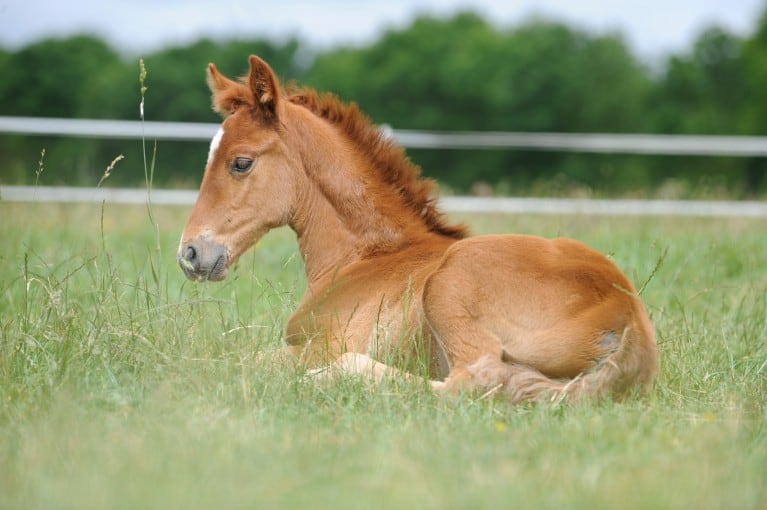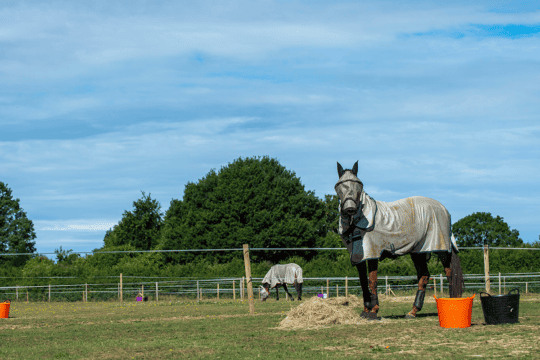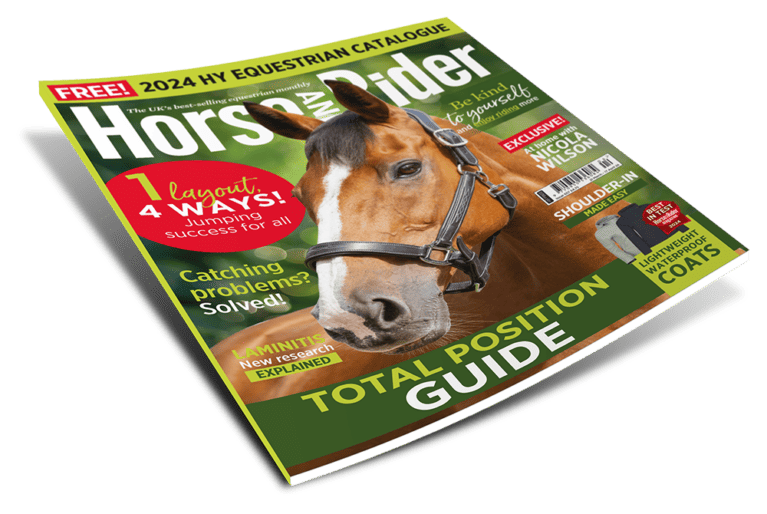Just as twittering birds announce the birth of foals every spring, frost-covered paddocks signal to many that it’s time for tiny hooves to stride out on their own and be weaned

Since birth, the mare will have been the primary influence on her foal’s life. Bonding begins with first breaths, as the dam nuzzles and cleans her new arrival. During the first few weeks, foals feed regularly and are rarely far from the safety of their mother’s shadow. During the first few months, a foal learns that comfort and protection comes with ears, four hooves and a helpfully swishy tail. As the foal grows, he starts copying his mother by tasting grass, hay and feed, as well as embarking on brave explorations of the universe around him and galloping back to her side for reassurance as needs be.
Growing up
Weaning is a process meant to accustom a foal to doing without his mother’s milk as food, and can occur at any time from the age of about three months to a year – the average age for weaning is around six months. All mammals go through a weaning process at some stage of their development and it’s an important step on the road to independence. In the wild, horses wean their offspring after about a year, often in time for the arrival of the mare’s next foal. In domestic settings, weaning is a carefully managed process that begins long before the mare and foal are physically separated.
Weaning represents a dramatic change in a foal’s life, and should therefore be handled with the utmost sensitivity and forethought. One could say every moment leading up to a foal’s weaning is preparation for the first strides in his independent life.
Katy Tyler and her family run Middle Park Stud, a 50-acre facility located near Thirsk in North Yorkshire focused on breeding sport and competition horses. An important element of the stud’s work involves weaning their future stars as successfully and safely as possible.
Tweet, tweet!
Hilary Legard, a great supporter of British breeding with a particular interest in Welsh part-breds, leased her mare, Ganton Redstart, to Katy so she could be bred to advanced eventer Primitive Faerie Tale.
With little ceremony and right on schedule, new broodmare, Redstart, introduced to the world her chestnut filly foal, in a foaling box at Middle Park early in the spring of 2008. After a successful career as an eventer, the 16.1hh Redstart settled right in to her life as a doting mum. It’s a good thing, too, as Red Faerie is full of beans and needs an attentive mum to keep her out of trouble!
Red Faerie’s first few weeks were cold and wet, so she and Redstart were brought in from their nursery paddock at night. This routine meant Red Faerie learnt to lead to and from the field beside her mum early on. “She can be quite laid-back, staying curled up and trying to snooze while her foal slip is put on in the mornings for a few extra minutes of lie- in!” laughs Katy.
Summer is a great time to be a foal, and many are turned away with their mares to enjoy life. Middle Park Stud is fortunate to have fields with good grass, and they find mares hold their condition well with a comprehensive balancer and a sprinkling of chaff.
“The foals started tasting the mares’ feed, but when the mums decided they were tired of sharing, the foals were given their own buckets,” remembers Katy.
Handle with care
Foals who are well-handled are much better prepared to cope with weaning. Daily handling also makes routine jobs, such as worming and feet trimming, positive first experiences of life as a grown-up horse. Foals also need their passports completed, and finding whorls and markings on wild, wiggly foals can be a nightmare if they are not used to being handled!
Packed lunches
Late summer and into autumn, feed rations are often increased to compensate for the quality of grass dropping off. Foals can stay on their balancer and chaff, but conditioning feed like cubes can be added if mare or foal need a little boost. “Redstart and Red Faerie maintained their condition really well through the autumn, and they’re both in great shape for weaning,” remarks Katy.
Season of change
Whilst weaning itself is a natural part of growing up, methods vary. “We wean at about five months of age, depending on the time of year, the weather and the condition of the mare and foal. We aim for the transition from the foal being on the mare to being weaned, to be as stress-free as possible and try to ensure the changes to the foal’s diet are minimal,” explains Katy.
“We use boxes next to each other, so mare and foal can see each other. We try to wean two foals at the same time, placing both foals in one box for company, with the mares on each side. We have found that if the mare and foal can see each other, they settle very quickly,” assures Katy. Mares and foals should be closely monitored during the weaning period for feed and water intake. Foals may not appreciate handling when they are stressed and should be kept in until they have settled.
Independent woman
Red Faerie has started her life as a grown-up horse and is facing the world bravely on her own four hooves. Will she follow her sire and dam, and take big questions as an eventer in her stride? Only time will tell. As she trots out into the field to meet her horsey friends, she leaves her own bold track in the dewy grass.
First steps to independence
Middle Park Stud tries to wean two foals at the same time, so they have company during the process. Here’s how they do it…
Step one
Establish a routine of mares and foals in overnight, then turned out during the day. Lead foals in and out beside their mothers and handle daily.
Step two
Allow foals to adjust to hay and feed, drinking from a bucket and the sounds, smells and bustling nature of yard life. Once mares and foals are settled, they’re ready for the next step.
Step three
Check that everything is safe, remove buckets and hay nets from all stables. On the way back from turnout, place foals in one box and mares in boxes either side. Replace safe buckets and feed when settled.
Step four
The mares will need reduced feed until their milk dries up, when they can return to their field. Foals continue on the same feed as prior to weaning.
Step five
Once the foals are settled in their new routine, you can separate them on return from turnout into individual boxes.















